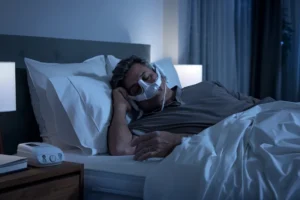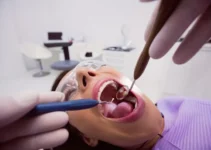Airing CPAP is an innovative device aimed at transforming the way sleep apnea is managed by offering a smaller, more portable alternative to traditional CPAP machines. This compact device is designed to be hassle-free, without the encumbrance of tubes or wires, making it ideal for those who find conventional CPAP machines cumbersome and restrictive. It utilizes advanced micro-blower technology to sustain continuous positive airway pressure, helping users maintain unobstructed breathing throughout the night and thus improving sleep quality significantly.
Introduction to Airing CPAP
What is Airing CPAP?
Airing CPAP is a revolutionary treatment designed to address Obstructive Sleep Apnea (OSA) effectively. Unlike traditional Continuous Positive Airway Pressure (CPAP) machines, Airing CPAP is a small, portable, and cordless device that fits comfortably into your nostrils. This innovation represents a significant advancement in sleep medicine, providing patients with an easy-to-use and less intrusive option compared to bulky, mask-based systems.
The concept of Airing CPAP capitalizes on the need for convenience and mobility. Traditional CPAP machines often require a power source, hoses, and masks, which can be cumbersome and discourage consistent use among patients. Airing CPAP mitigates these issues by offering a compact solution that patients can easily carry and use anywhere.
How Airing CPAP Works
The functionality of Airing CPAP lies in its micro-CPAP technology. The device utilizes tiny yet powerful fans to generate a positive air pressure that keeps the airway open during sleep. This process ensures a steady airflow through the nasal passages, effectively reducing or eliminating apnea episodes.
When a patient uses the Airing CPAP, they insert the device into their nostrils, where it detects and responds to breathing patterns. The fans adjust the airflow dynamically, ensuring optimal pressure is maintained throughout the night. This automatic adjustment is critical in providing a comfortable and effective treatment for OSA sufferers.
The Airing CPAP doesn’t require straps or headgear, which are often points of discomfort with traditional CPAP machines. This simplicity enhances user compliance and ensures the treatment is less obtrusive and more appealing to individuals who struggle with conventional therapies.
Benefits of Using Airing CPAP
There are multiple advantages to using Airing CPAP over traditional CPAP machines:
- Portability: The device’s compact size allows users to take it anywhere, ensuring they can adhere to their treatment plan even while traveling.
- Comfort: The absence of masks and straps makes Airing CPAP more comfortable, reducing the likelihood of skin irritation and pressure sores.
- Ease of Use: With its straightforward design, patients can quickly and easily insert the device, reducing setup time and increasing the likelihood of regular use.
- Improved Compliance: The user-friendly nature of Airing CPAP significantly enhances patient compliance, a critical factor in the effective management of OSA.
Moreover, studies have shown that consistent use of CPAP devices, including innovations like Airing CPAP, can lead to significant improvements in overall health. This includes better cardiovascular health, reduced risk of stroke, and improved quality of life due to better sleep quality (Duran-Cantolla et al., 2016; Anitua et al., 2017). Considering these benefits, Airing CPAP represents a forward-thinking solution in the management of obstructive sleep apnea. To explore more innovative approaches and advancements in sleep apnea treatments, be sure to read our other articles on this topic.
Comparing Airing CPAP to Traditional CPAP
Continuous Positive Airway Pressure (CPAP) therapy is widely recognized as the standard treatment for Obstructive Sleep Apnea (OSA). While traditional CPAP machines have been effective, they often come with various challenges that can affect patient compliance. Airing CPAP, a recent innovation, aims to address these issues, offering a more convenient and user-friendly alternative. In this article, we will delve into the key differences between Airing CPAP and traditional CPAP, exploring how each option impacts the user experience.
Understanding these differences can help patients and healthcare providers make informed decisions about the most suitable treatment for OSA. Crucially, the effectiveness of any CPAP device depends on factors such as patient comfort, ease of use, and overall compliance with the prescribed treatment.
Key Differences
One of the primary differences between Airing CPAP and traditional CPAP lies in their design and functionality. Traditional CPAP machines generally consist of a main unit connected to a mask via a long hose. This setup can be cumbersome and restrictive for many users. In contrast, the Airing CPAP is a small, hose-free device that fits directly into the nostrils, providing a more streamlined and portable solution.
Another significant difference is the power source. Traditional CPAP machines require a constant power supply, usually from a wall outlet. This can be limiting for users who travel frequently or do not have reliable access to electricity. The Airing CPAP, on the other hand, is battery-operated, which adds a layer of convenience and flexibility.
Lastly, the maintenance and upkeep of these devices vary considerably. Traditional CPAP machines necessitate regular cleaning of various components such as the mask, hose, and water chamber. The Airing CPAP, being a disposable device, eliminates the need for such maintenance, which can be a major advantage for users who find the cleaning process burdensome.
User Experience
The user experience with Airing CPAP and traditional CPAP can differ greatly, impacting overall treatment compliance. Traditional CPAP machines, with their bulkier design and noise levels, can cause discomfort and sleep disturbances, leading to lower adherence rates. The Airing CPAP’s compact and whisper-quiet operation is designed specifically to mitigate these issues, making it easier for users to incorporate the device into their nightly routine.
Comfort is another critical factor. Many patients find the mask and hose of traditional CPAP machines to be uncomfortable and intrusive, which can disrupt sleep and reduce compliance. The Airing CPAP, being lightweight and hose-free, offers a more comfortable option that can enhance the user’s willingness to use the device consistently.
Portability is also a significant consideration, especially for patients who travel frequently. Traditional CPAP machines can be bulky and inconvenient to transport, often requiring additional luggage space and careful packing. The Airing CPAP’s compact size and battery operation make it an ideal travel companion, ensuring that users can maintain their treatment regimen without hassle.
In conclusion, the differences between Airing CPAP and traditional CPAP can have a profound impact on the user experience and overall treatment compliance. Each option has its own set of advantages and challenges, and the best choice will depend on the individual needs and lifestyle of the patient. For a more comprehensive understanding of sleep apnea treatments, we invite you to explore our other articles on the topic.
How to Get Started with Airing CPAP
Starting treatment for Obstructive Sleep Apnea (OSA) can be daunting. Continuous Positive Airway Pressure (CPAP) therapy is one of the most effective treatments available, helping millions of individuals around the world manage their symptoms and improve their quality of sleep. If you have been recommended to begin CPAP therapy, the initial steps are crucial for successful treatment.
Firstly, it is important to understand exactly what a CPAP machine does. CPAP devices work by delivering a steady stream of pressurized air through a mask, keeping your airways open during sleep. This ensures that you can breathe easily and continuously throughout the night. Numerous studies have confirmed the efficacy of CPAP in significantly reducing episodes of apnea and improving sleep quality.
To get started with your CPAP therapy, you will need to take the following steps:
- Consult a healthcare provider to obtain a prescription for CPAP.
- Undergo a sleep study to determine the appropriate CPAP settings tailored to your needs.
- Choose the right type of CPAP machine and mask for your comfort and lifestyle.
Where to Purchase
Once you have a prescription and have completed your sleep study, the next step is to procure your CPAP equipment. Several options are available for purchasing a CPAP machine, each with its own set of advantages. One option is to buy your CPAP machine from a local medical supply store. This can be beneficial as it allows you to physically inspect the device and get immediate answers to any questions you may have. In addition, many local suppliers offer personalized fittings for masks and provide ongoing support and maintenance services.
Alternatively, many reputable online retailers specialize in CPAP equipment. Purchasing online can offer convenience and often lower prices. It is essential to ensure that the online retailer is accredited and has good reviews. Be sure to check their return policy and warranty in case you need to exchange or return the machine.
Lastly, some insurance plans may cover part or all of the cost of CPAP equipment. Make sure to check with your insurance provider to understand what is covered and the process required for reimbursement.
Getting started with CPAP therapy can significantly improve your quality of life by ensuring better sleep and reducing the health risks associated with OSA. For more insights and detailed guides on managing sleep apnea and other dental health topics, be sure to read our other articles.
Understanding Airing CPAP Technology
Explore the intricacies and common inquiries regarding Airing CPAP, a groundbreaking approach designed to enhance the management of sleep apnea.
What is Airing CPAP and how does it differ from traditional CPAP machines?
Airing CPAP is a novel, hoseless, maskless, and micro-CPAP device that aims to revolutionize the treatment of obstructive sleep apnea (OSA). Unlike traditional devices which often involve bulky equipment, an Airing CPAP device is small enough to fit within the nostrils, providing a less invasive, and significantly more compact alternative to help maintain open airways.
What are the benefits of using Airing CPAP over other sleep apnea treatments?
Airing CPAP offers several advantages including enhanced comfort, portability, and user-friendliness. Due to its small size and lack of external hoses, it greatly reduces the discomfort and tethered feeling associated with traditional CPAP machines. This not only helps in improving users’ compliance to the therapy but also makes it easier to use while traveling, ensuring consistent treatment regardless of location.

My name is Salman Kapa, a 73-year-old expert in bone regeneration and dental implantology. With decades of experience in the field, I am dedicated to advancing our understanding of oral health and hygiene. Through my research and writing, I aim to contribute to the development of innovative solutions in dental care.




